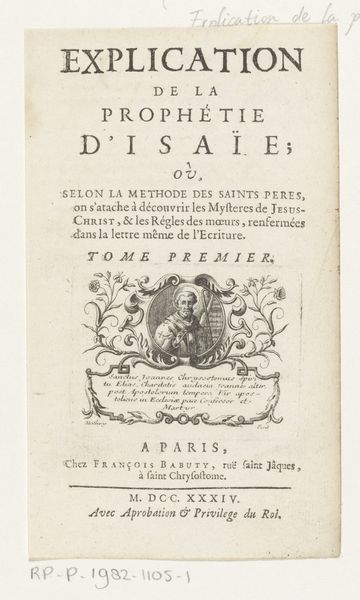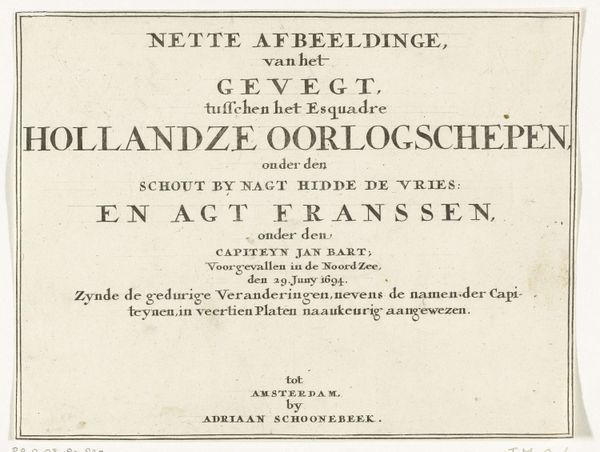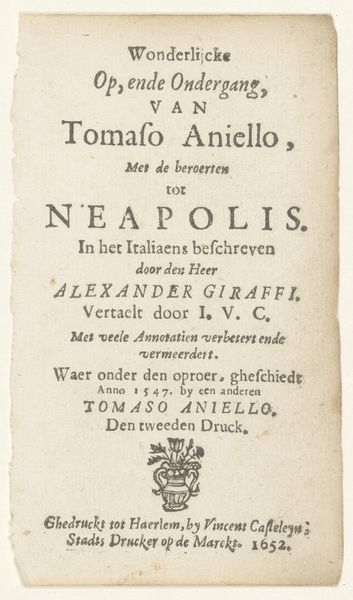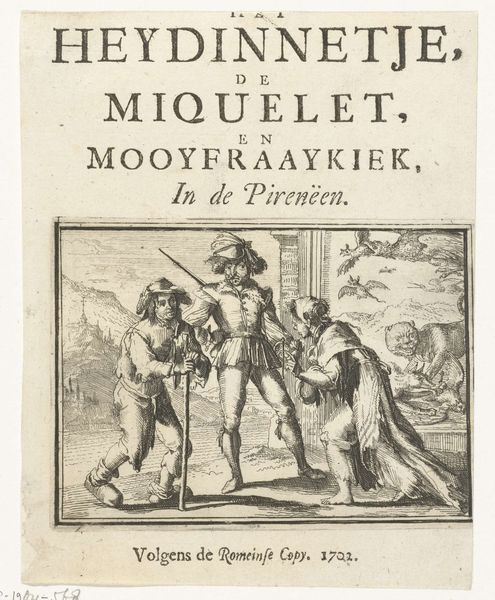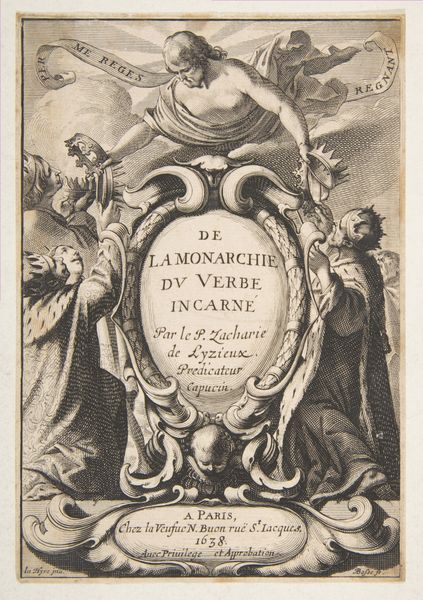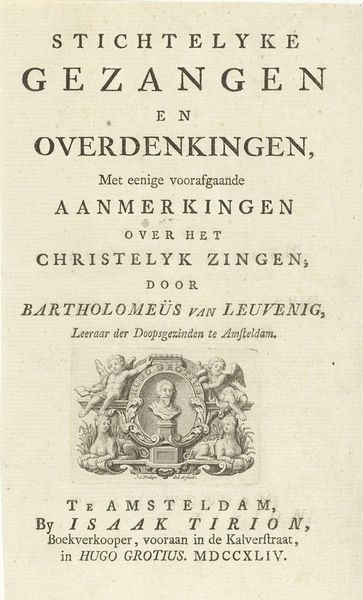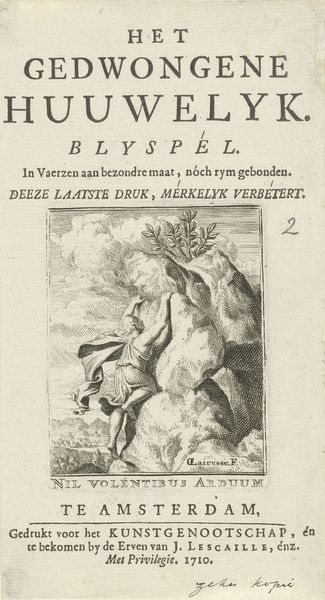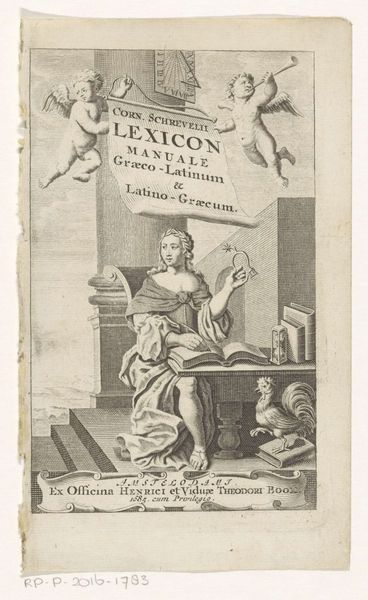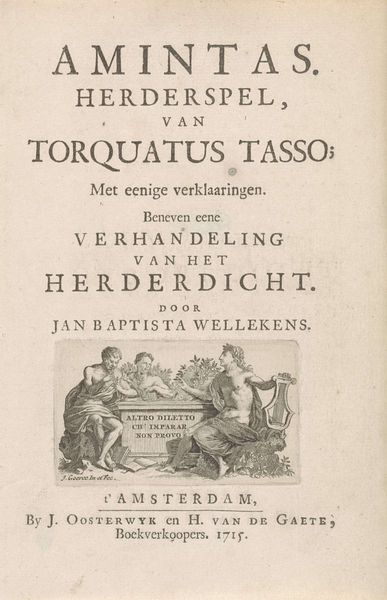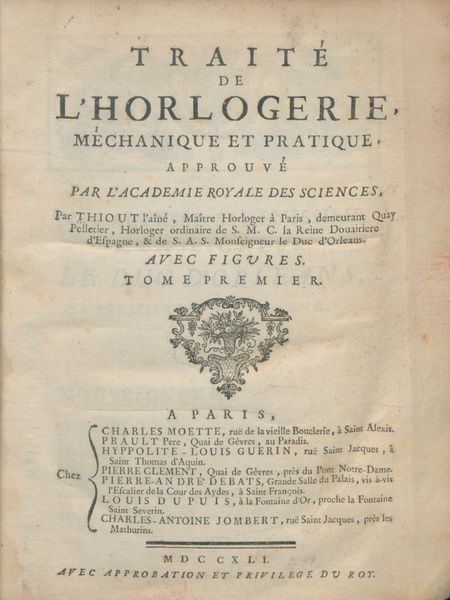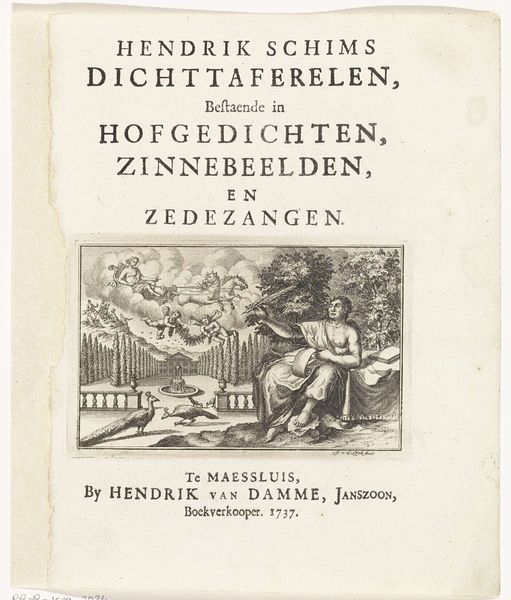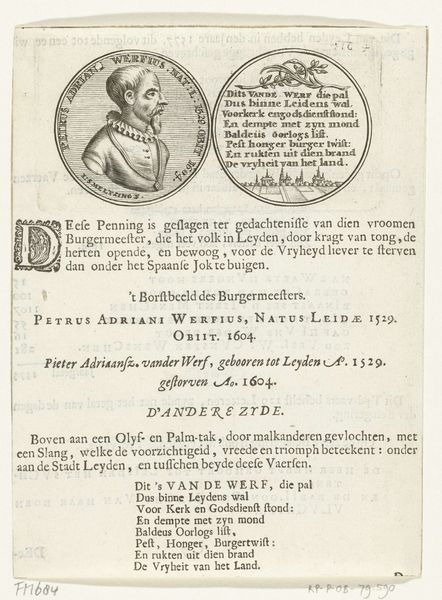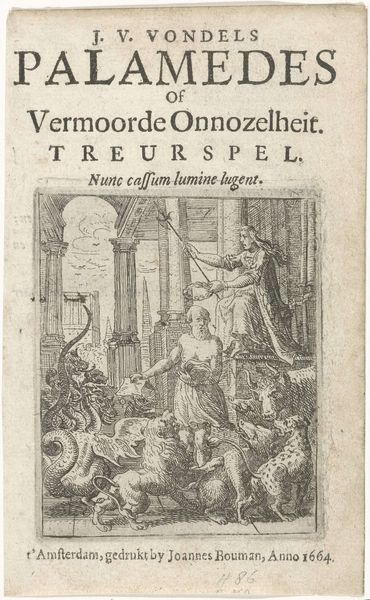
Titelblad voor het pamflet: Rouwklagt van de Fransche Apollo over de Verdorde Distelbloem, 1701 1701
0:00
0:00
romeyndehooghe
Rijksmuseum
print, engraving
#
aged paper
#
allegory
#
baroque
#
parchment
# print
#
old engraving style
#
hand drawn type
#
personal sketchbook
#
line
#
pen work
#
history-painting
#
golden font
#
word imagery
#
engraving
#
historical font
#
columned text
Dimensions: height 175 mm, width 140 mm
Copyright: Rijks Museum: Open Domain
Curator: This is the title page for the pamphlet "Rouwklagt van de Fransche Apollo over de Verdorde Distelbloem, 1701," created by Romeyn de Hooghe. It's an engraving dating back to 1701, here on display at the Rijksmuseum. Editor: It has such a distinct appearance. The use of line and the parchment-like appearance of the paper make it appear simultaneously aged and vital. Curator: Indeed. We can view this work through a material lens; consider the paper itself. It served as a substrate for disseminating political discourse. How the engraver's labor interacts with this substrate— the tools used to imprint an image that carried significance. Editor: And the image! We have Apollo, representing France, mourning a withered thistle, presumably Scotland's national symbol. Note his expression—almost theatrical, wouldn’t you agree? And he’s right in front of a building evoking Versailles and directly impinging on that wilting thistle. It’s not just grief; it’s a complex web of national identity, loss, and political tension embodied in this dramatic tableau. Curator: Yes, and think of how prints like these, though seemingly simple, were reproduced. The social context allowed for dissemination, creating widespread reach and shaping the collective narrative during the war of the Spanish Succession. Consider the availability of materials; the workshop structures, the printmaker’s skills and how the economy drove the production and circulation of this type of imagery. Editor: I am intrigued by how De Hooghe blended mythological and contemporary symbolism. The title, “Rouwklagt” (mourning song), coupled with Apollo, god of music, art, and prophecy, infuses emotional resonance, while the "withered thistle" speaks directly to political struggles. It asks us to reflect upon a moment where these complex meanings become fused within this single image. Curator: Exactly. Looking closely, one sees the fine lines and the meticulous process by which these ideas have been materially produced and brought into wider distribution for contemporary audiences to interact with. It emphasizes the physical dimension and lived labor that generates artistic and intellectual capital. Editor: And understanding the power of allegory through this historical print makes one appreciate the subtle persistence of symbolic thinking through art history and today. I wonder how those ideas can find continued presence in new settings.
Comments
No comments
Be the first to comment and join the conversation on the ultimate creative platform.
